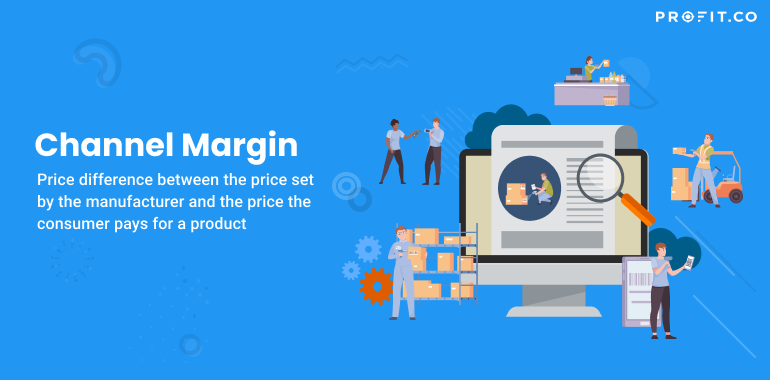The Channel Margin is a pretty easy to understand metric – basically, it’s the difference between the price a manufacturer has on its product and the price a consumer is paying for that product.
But, before getting into more details about the Channel Margin, we have to go through the entire process that has this metric as the end result – namely, the distribution channels and the price increases.
You’ll see, in the following lines, that the Channel Margin is heavily influenced by entities that are entirely external in regard to your business – therefore, you have to take the right decisions when making a deal with a certain manufacturer.
Distribution Channels
The relationships between retailers, wholesalers, and manufacturers are those that can be identified as interdependent relationships – every one of the aforementioned is a member of a distribution channel that contributes to the channel margin.
For example, it’s most likely that your business is a part of a distribution channel – if that’s the case, you have to collaborate with the members within your distribution channel in order to make sure that the final selling price does round up profit and that it is attractive to customers, as well.
The basic distribution channel is built using the following – a factory, a wholesaler, and a retailer. Basically, the factory produces and sells products to a wholesaler which will then distribute the same products to a retailer. Of course, the final link of the distribution channel is the one between the retailer and the customer.
Basically, a certain product is bought over and over again until it fulfills the purpose it has been manufactured for. Naturally, there are some other things that happen on its way to the customer’s house.
Increases in Price
In a distribution channel, every one of its members aims for as much profit as possible. Therefore, each of the businesses that follow the factory, for example, will increase the price of the products.
This affects all the members of a distribution channel and also forces them to subsequently increase the product’s price, in order to round up some profit, of course. These increases in price are eventually felt by the customer, as he or she is the part of the distribution channel that is not bound to make any profits.
The Channel Margin
As mentioned before, the Channel Margin is a price difference – between the price set by the manufacturer and the price the consumer pays for a product – and is usually calculated by multiplying the sales through a certain channel with the margin of that channel, the summing the end result for all the existing channels, after which the result is divided by the total number of sales channels.
Price is a big issue here because price also means profit. Therefore, in order for a certain channel to ensure its financial stability, it is motivated to increase the price. This action, obviously, affects all the distribution channels.
In the end, if the final price is too high, the customer will find another store, where a similar product is sold at a convenient price. Therefore, each channel must take some time thinking about the price increases, as a bad decision will affect the whole chain and eventually damage everyone’s profits.
